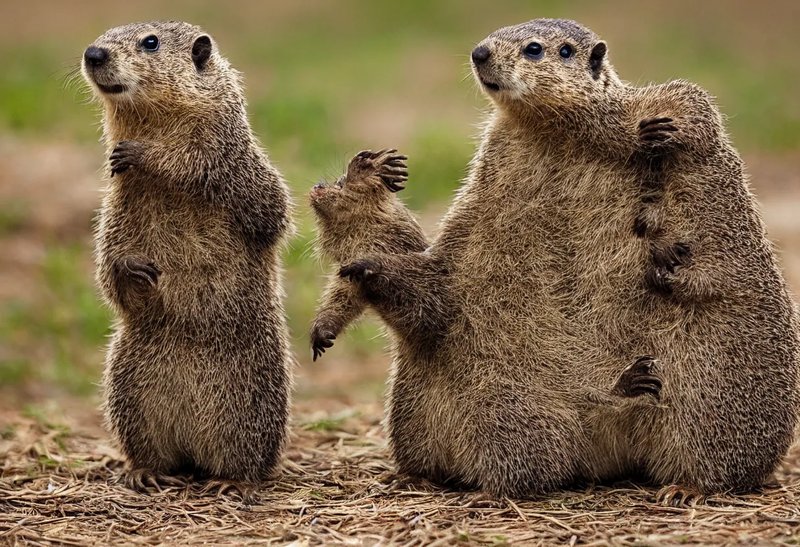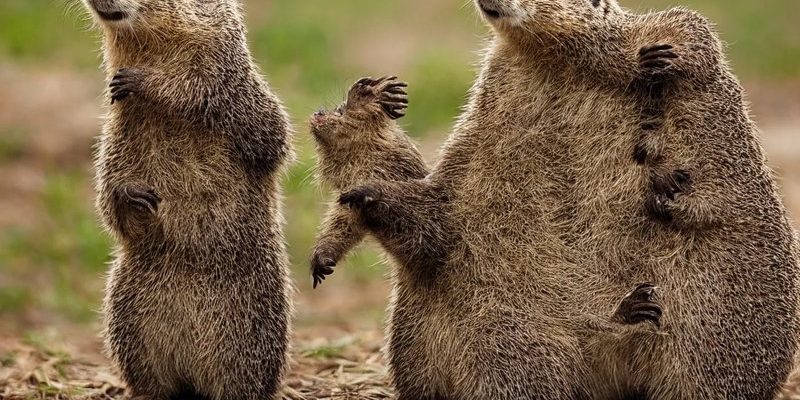
Honestly, the way we perceive groundhogs has a lot to do with their behavior. Their habits of hibernating during the winter and emerging in early spring make them an intriguing focal point for *folklore* about seasonal change. If you’ve ever heard of Groundhog Day, you might be surprised to learn that it’s just one chapter in the story of how these creatures are viewed around the world. Let me explain why groundhogs are not just animals but cultural icons that reflect our human beliefs and rituals.
The Origins of Groundhog Day
Groundhog Day, celebrated on February 2nd each year, traces its roots back to an ancient European tradition. The idea was to observe a hibernating animal’s behavior to predict the arrival of spring. In Europe, people looked to *hedgehogs* or *badgers* for this insight. When German immigrants brought the tradition to America, they found the groundhog, or woodchuck, to be a suitable substitute, leading to the quirky celebration we know today.
The event in Punxsutawney, Pennsylvania, has become famous worldwide. Each year, thousands gather to see if the groundhog, named Punxsutawney Phil, will see his shadow. If he does, we’re in for six more weeks of winter. If not, spring is just around the corner. It’s a lighthearted event, but it symbolizes hope and the cyclical nature of the seasons. Festivals often include music, food, and various activities, turning an otherwise simple folklore into a community celebration.
Interestingly, the weather prediction aspect is a metaphor for mankind’s desire to control uncertainty. We often look for signs and symbols to help us navigate life’s unpredictability, and the groundhog just happens to play that role in this specific context.
Groundhogs in Native American Culture
Many Native American tribes also recognize the significance of the groundhog. For instance, the *Leni Lenape* Tribe believed that the groundhog was a messenger. They observed its behaviors to help understand the cycles of nature. The groundhog’s emergence from its den after a long winter was important because it indicated not just a seasonal change but also a time to prepare for planting.
Additionally, in some cultures, the groundhog embodies themes of renewal and awakening. This perspective aligns closely with spring’s arrival. Many tribes viewed the groundhog as a symbol of fortitude. It represents patience and the wisdom of waiting for the right moment to come out of hiding, a reminder of nature’s timing and the importance of respecting it.
Understanding these cultural interpretations invites a broader discussion about how we relate to the natural world. Groundhogs teach us that life is cyclical and that patience is sometimes necessary to see the fruits of our labor.
Modern Representations in Pop Culture
Groundhogs have found their way into movies, books, and songs, further embedding them in modern culture. One of the most famous examples is the movie *Groundhog Day*, starring Bill Murray. In this classic, the protagonist repeatedly relives the same day, which is February 2nd. The film uses the groundhog’s emerging behavior as a backdrop for deeper themes like personal growth and redemption.
This representation has made the groundhog a symbol of change and introspection. People often associate it with the idea of taking a fresh outlook on life or breaking free from old habits. The film reinforces the notion that we all have the power to change our circumstances—if only we take a moment to reflect on our lives.
Through humor and clever writing, movies like these expand our view of the groundhog beyond mere folklore. They invite audiences to explore their relationships with time and repetition, reminding us that transformation is always possible.
Groundhog Folklore Around the World
While Groundhog Day is perhaps the most well-known celebration involving groundhogs, various cultures around the world have their own versions of animal weather predictions. For example:
- The *Siberian marmot* is used in some regions of Russia for similar spring predictions.
- In *Scotland,* the *badger* is observed for signs of weather changes.
- In *Germany,* the same traditions focus on a *hedgehog* as a weather predictor.
These stories highlight a fascinating commonality across cultures: the human tendency to anthropomorphize animals and interpret their actions through our own experiences. It’s as if we’re searching for guidance from these creatures as we navigate the changing seasons of our own lives.
This universal aspect of folklore illustrates how deeply connected we are to nature and how these stories often transcend cultural boundaries, creating a tapestry of shared human experiences.
The Groundhog in Literature
Groundhogs also appear in literature, often representing themes of time and transformation. In children’s books, these creatures are often portrayed as playful characters that embark on adventures. For instance, *Winnie the Pooh* features a character named Gopher, closely resembling the cheerful spirit attributed to groundhogs. These portrayals foster a sense of whimsy and curiosity surrounding these furry animals.
Moreover, folk tales often incorporate groundhogs as clever tricksters or wise old sages. This representation not only captivates young readers but also mirrors the qualities seen in real life—resourcefulness, adaptability, and the determination to overcome obstacles.
The importance of these literary depictions cannot be underestimated. They continue to shape our understanding of groundhogs and encourage readers to appreciate the lessons these animals can teach us about life and growth.
Environmental Significance and Conservation
Beyond folklore and culture, it’s vital to recognize the groundhog’s role in the ecosystem. Groundhogs are herbivores and contribute to vegetation management. They maintain healthy ecosystems by eating various plants and ensuring a balanced environment. Their burrowing habits also promote soil aeration, which benefits plant growth.
However, human development and habitat destruction pose significant threats to these creatures. As urban areas expand, groundhog populations can decline, and they may increasingly venture into populated areas, leading to conflicts with people. This reality highlights the need for conservation efforts to protect their habitats and promote coexisting with wildlife.
By learning about the environmental significance of groundhogs, we can better appreciate their role not only in *folklore* but also in promoting a healthy ecosystem. Groundhogs remind us to respect nature, emphasizing our interconnectedness with all living beings.
The groundhog is much more than just a weather-predicting rodent; it’s a rich symbol woven into the cultural tapestry of various traditions. From folklore to pop culture, these animals remind us of seasonal changes, the importance of patience, and our connection to nature. Their representation encourages us to reflect on our lives, embrace change, and celebrate community.
As we continue to share stories of groundhogs and respect their role in the ecosystem, we not only keep traditions alive but also foster a deeper understanding of our place in the world. So, whether you’re celebrating Groundhog Day or simply enjoying the idea of these creatures, remember to embrace the lessons they offer.

